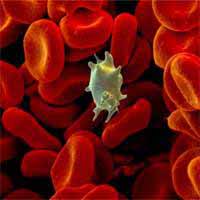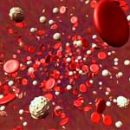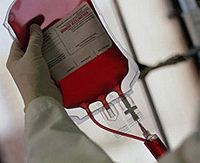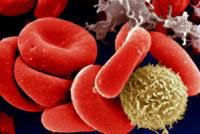Primary thrombocytosis is a hematological lesion at which there is a violation of the activities of bone marrow stem cells. As a result, blood platelet levels significantly increases significantly.
Content
The concept of primary thrombocytosis
Primary thrombocytosis is a hematological lesion relating to myeloprolifefer-tively syndrome, in which there is a violation of stem cells, characterized by autonomous proliferation of one or more hematopopic sprouts in the bone marrow. As a result, an excess number of cells appear in peripheral blood and, in some cases, liver and spleen. These ailments that are striking, above all, people over 60, are quite rare in children and young people. So, for example, thrombocytosis prevalence in childhood is approximately 0.09 cases per million children aged 0 to 14 years.
Symptoms of the disease
 Symptoms of manifestation of the disease are variable and mostly diagnosed randomly on the basis of data of the general analysis of blood conducted with a general examination of the patient. The most common symptoms are headaches. The diagnosis is sometimes raised before the appearance of thrombotic or hemorrhagic complications. In fact, these patients have an increased frequency of complications associated with violation of platelet aggregation.
Symptoms of manifestation of the disease are variable and mostly diagnosed randomly on the basis of data of the general analysis of blood conducted with a general examination of the patient. The most common symptoms are headaches. The diagnosis is sometimes raised before the appearance of thrombotic or hemorrhagic complications. In fact, these patients have an increased frequency of complications associated with violation of platelet aggregation.
The diagnostic criteria for primary thrombocytosis are:
- Number of platelets more than 600 g / l
- Hematokrit less than 40% or normal blood
- Normal level of ferritin or normal erythrocyte with an average normal erythrocyte volume
- Normal medullar karyotype
- The absence of medullary fibrosis (or less than 1/3 in the absence of an increased spleen and elevated level of leukocytes in the blood)
- Lack of morphological anomalies or cytogenetic changes indicating the presence of myeloproliferative syndrome
- No cause of reactive thrombocytosis
The diagnostic criteria for primary thrombocytosis are based on the aggregate of symptoms and biological data with the presence of the features of the bone marrow myelogram with a pronounced increase in the megacariocyte sprout, which is responsible for the formation formation. Bone marrow biopsy allows you to state an increase in bone marrow cells.
Mechanisms for the development of primary thrombocytosis
The mechanisms for the development of primary thrombocytosis are not yet known. There is the theory of clonal damage to the bone marrow (that is, associated with the proliferation of a single cell pathological clone). The disease turns out to be the hardest in the case of clonality with a particularly increased risk of thrombosis.
Treatment of primary thrombocytosis
Currently, in the treatment of primary thrombocytosis, therapeutic preparations such as Hydrea or hydrocyuria (hydroxyuropean) are used - this is an antimitric used for many years. These drugs play a role in a decrease in thrombotic risk, reducing blood viscosity by limiting the interaction of leukocytes with a vascular wall and reducing the level of red blood tauros. The mechanism of action of antimitotics is associated with the oppression of ripening of megakaryocytes in the bone marrow (in weak doses) and the obstacle to the gluing platelets (at higher doses).
Interferon-alpha is also an effective means of treatment with thrombocytosis, but it is administered exclusively parenterally, that is, bypassing the intestines, the side effects of the drug, (influenza syndrome, psychiatric violations), forced to abandon its widespread use today.









